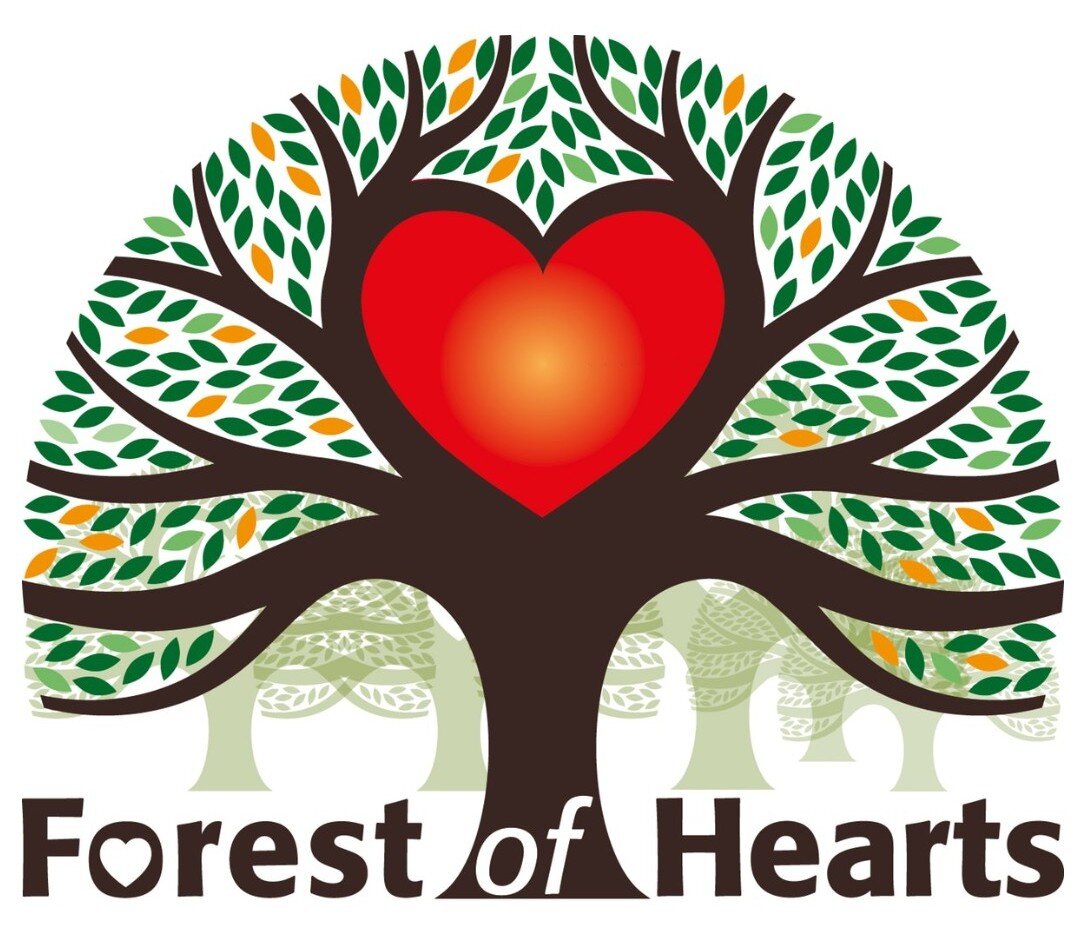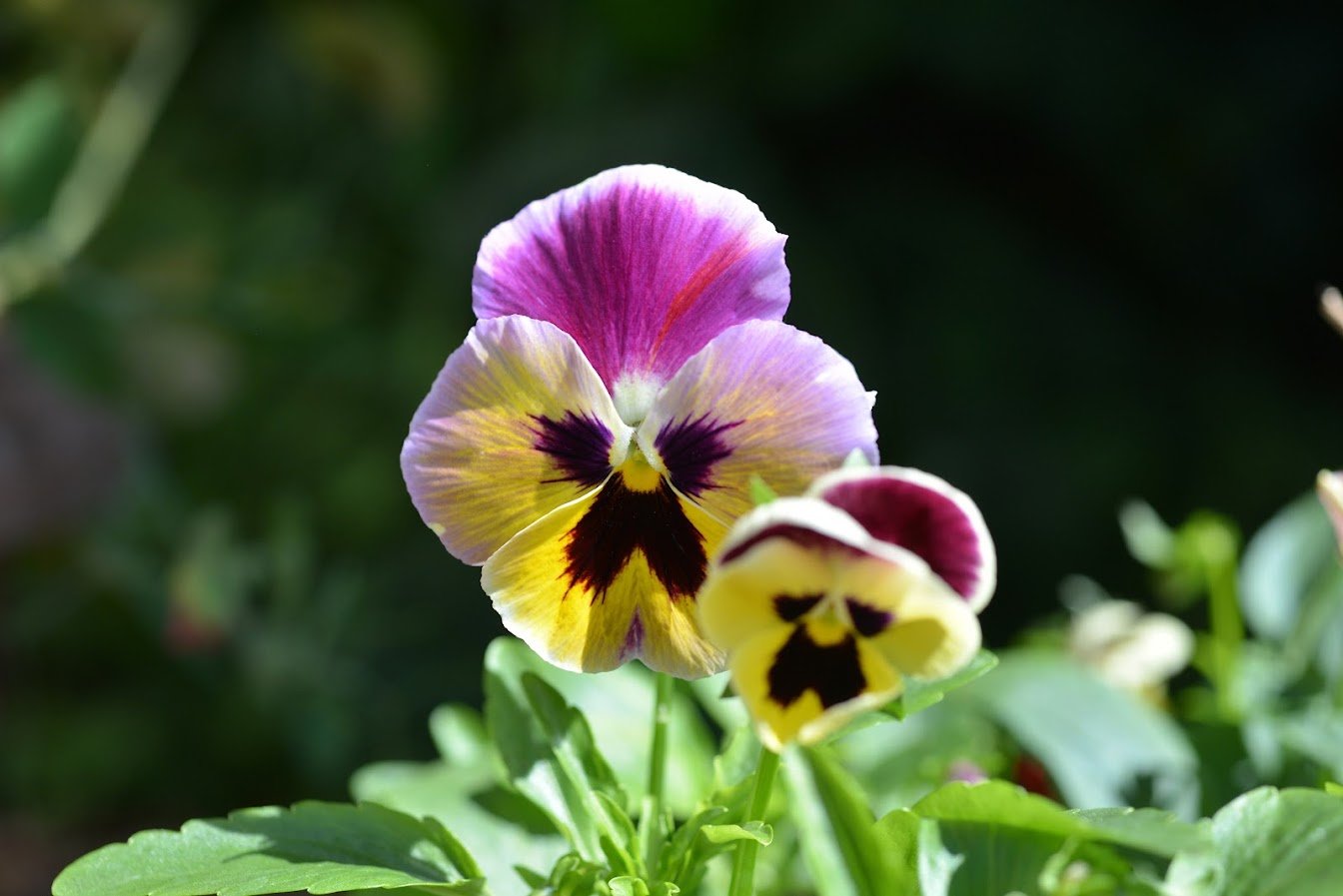A Midsummer Night's Garden
Guest blog by Rachel Stevenson, Shakespeare Insitute.
Shakespeare's A Midsummer Night’s Dream is crammed full of references to plants, flowers, fruits and insects working together to create the magical and awe-inspiring setting. Despite taking place in Athens, the play’s ecosystem is reminiscent of an English forest, with most of the plants found in the UK. Read on to discover more about how nature functions in A Midsummer Night’s Dream, and learn how to introduce some of Shakespeare’s wonder into your garden!
‘Dian’s Bud’ vs. ‘Love-In-Idleness’
The action of A Midsummer Night’s Dream hinges upon two flowers. First, we have the magical herb ‘love-in-idleness’, which Oberon and Puck use to enchant the lovers and Titania:
OBERON: [...]
Yet marked I where the bolt of Cupid fell.
It fell upon a little western flower-
Before, milk-white; now, purple with love’s wound-
And maidens call it love-in-idleness.
Fetch me that flower; the herb I showed thee once.
The juice of it on sleeping eyelids laid
Will make or man or woman madly dote
Upon the next live creature that it sees. (II.1 155-173)
‘Love-in-idleness’ is most commonly identified by critics as a pansy, its deep purple centre bleeding out onto the lighter leaf to symbolise the wound of Cupid’s arrow. The eroticism of the pansy is highlighted by its association with Venus, the Roman goddess of love and mother of Cupid, as well as its alternative common name ‘heartsease’. Furthermore, the name pansy derives from the French ‘pensée’, meaning ‘thought’. This adds to the mind-control element of Oberon’s spell, implanting thoughts of love into the victim’s head.
On the other hand, Lou Agnes Reynolds argues that this herb could instead be St. John’s Wort comparing the purple-red staining that occurs when the yellow herb is crushed to the ‘purple dye’ (III. 2 102) of ‘love-in-idleness’ juice.
When Puck wreaks havoc with ‘love-in-idleness’, Oberon gives him a new herb, ‘Dian’s bud’, to use as an antidote. Oberon also uses this herb to release Titania from her infatuation with Bottom:
OBERON: Be as thou wast wont to be.
See as thou wast wont to see.
Dian’s bud o’er Cupid’s flower
Hath such force and blessèd power.
Now, my Titania, wake you, my sweet queen. (IV.1 70-71)
Like ‘love-in-idleness’, the origins of ‘Dian’s bud’ are uncertain. However, whereas the former herb is linked to the romancing capabilities of Cupid and Venus, the latter is associated with Dian (Diana), the Roman goddess of virginity and chastity. The two herbs are therefore oppositional to each other, allowing Dian’s bud to neutralise the power of Cupid.
There are two contenders for ‘Dian’s bud’. It could be Artemisia (mugwort), based on the fact that its name-sake, Artimus, is the Greek equivalent of Diana. Alternatively, it may be Vitex angus castus or ‘chasteberry’, which, among its various medicinal properties, was said to reduce libido and encourage chastity. Whatever real plants Shakespeare had in mind when writing about these mystical herbs, they represent a mythological and emotional battle, as well as a horticultural one.
Fairy Flowers and ‘Fairy Favours’
Even when the fairies are not using magical flowers for mischief, the fairies are particularly in tune too their natural setting. Sometimes, fairy and flora become indistinguishable as seen in the naming of the fairies ‘Peaseblossom’ (suggesting an agricultural link to pea and squash plants) and ‘Mustardseed’ (used in cooking, but also medicinally for its purgative and antimicrobial properties).
Fairy also refers to cowslips as Titania’s ‘pensioners’, which in the early modern period could mean ‘attendant’ or ‘person who [...] pays tribute to another’ (as defined by the OED online), aligning flowers with Titania’s fairy followers:
FAIRY: In their gold coats spots you see;
Those be rubies, fairy favours;
In those freckles live their savours.
I must go seek some dewdrops here,
And hang a pearl in every cowslip’s ear. (II.1 10-15)
Blooming in early spring, cowslips are associated with new beginnings and are often used in weddings and May Day celebrations. They were also used in Celtic Druid rituals, and are often associated with fairy magic beyond A Midsummer Night’s Dream.
Like many wildflowers, once very common in ancient woodland and meadows, the cowslip population is drastically decreasing. This is due to loss of habitat, new agricultural practices and a reduction in genetic variation, making it harder for the flowers to adapt to the extreme weather caused by climate change. You can find out more about cowslip population diminishment here, or take a look at The Wildlife Trust’s guide to planting a mini meadow and welcoming your own ‘fairy favours’ into your garden!
Titania’s Bower - Cultivating the Wilderness
When Oberon plans to enchant Titania, he gives Puck a vivid description of her bower or ‘grove’, focusing on its flowers:
OBERON: I know a bank where the wild thyme blows,
Where oxlips and the nodding violet grows,
Quite overcanopied with luscious woodbine,
With sweet musk-roses, and with eglantine. (II. 1 249-251)
The ‘musk-rose’ and ‘eglantine’ are both species of roses, similar to the thorny ‘briers’ that Puck and Fairy traverse throughout the play (II.1 3 & III.1 102). Oxlips are a variation of cowslips, continuing the theme of magic and wonder. The ‘nodding violet’ also links back to the romantic enchantment of ‘love-in-idleness’ as both pansies and violets are part of the Violaceae family.
Woodbine is not a real species of plant, but we can gather hints as to which plant Shakespeare is referring to from Titania later lines: ‘the woodbine the sweet honeysuckle // Gently entwist’ (III.3 41-42). Depending on how you edit the punctuation, the woodbine could be entwisting the honeysuckle, or the honeysuckle could be another name for woodbine. Either way, woodbine is described as a climbing plant which encases Titania’s bower. Though ‘lucious’ suggests luxury and decadence, the prefix ‘over’ in ‘overcanopied’ implies that this woodbine is growing out of control.
Despite being described as ‘wild’, thyme was commonly used in ‘knot gardens’ (highly manicured, decorative and formally symmetrical gardens). The pleasant aromas of the violets, roses, honeysuckle and thyme align Titian's seemingly wild bower with the traditions of early modern horticultural cultivation, architecture and human manipulation of the natural world for aesthetic purposes.
Bringing Back Biodiversity
The forest of A Midsummer Night’s Dream is not just full of flowers and faires, but alive with insects and creepy crawlies as well. Not all these creatures are viewed affectionately, for example as the fairies sing Titania asleep, they ward away the more “undesirable” insects and animals:
FIRST FAIRY: You spotted snakes with double tongues
Thorny hedgehogs, be not seen:
Newts and blindworms do no wrong;
Come not near our Fairy Queen.
CHORUS: Philomel with melody,
Sing our sweet lullaby:
Lulla, lulla, lullaby; lulla, lulla, lullaby.
Never harm
Nor spell nor charm
Come our lovely lady nigh.
So good night, with lullaby.
FIRST FAIRY: Weaving spiders, come not hear;
Hence, you long-legged spinners, hence;
Beetles black, approach not near:
Worm nor snails do no offence. (II.2 9-23)
Though the fairies are protecting their queen from the ‘spiders’, ‘beetles’, ‘snakes’, ‘hedgehogs’, ‘newts’ and ‘blindworms’, this lullaby also demonstrates the biodiversity of the forest’s ecosystem. However, these creatures are more than pests, and each plays a crucial role in our ecosystem. Insects are essential for pollination, nutrient cycling, and decomposition and play a key part in the food chain by feeding some species while keeping others in check - if there were no worms or snails, what would the hedgehog eat?
Sadly, due to a combination of climate change, habitat destruction and increased use of pesticides, these critters are slowly disappearing. A recent study suggested that the abundance of flying insects in the UK has decreased by 58.5% in the UK between 2004 and 2021. But there are ways that you can support the insect population and biodiversity in your own garden, check out this article by Charlotte Varela of The Woodland Trust, or consider installing a ‘Bug Hotel’!
If you want to learn more about saving the ‘thorny hedgehogs’ of Stratford-Upon-Avon, look at the amazing work of Hedgehog Friendly Town.
Even More Flowers!
Shakespeare put simply too many flowers into A Midsummer Night’s Dream to cover in only one article! If you need some more inspiration for your next horticultural project, here is a full list of the plants referenced in this wonderful play to infuse your garden with love, laughter and maybe a little bit of magic!
Apricot, Briar, Cherry, Corn, Cowslip, Dewberry, Eglantine, Elm, Fig, Garlic, Grape, Grass, Hawthorn, Hemp, Honeysuckle, Ivy, Leek, Lily, Mulberry, Musk-rose, Mustard, Oak, Orange, Oxlip, Peas, Primrose, Red rose, Thyme, Violet.
Sources
Ball, Lawrence, et al., Technical Report: The Bugs Matter Citizen Science Survey (2022) <https://cdn.buglife.org.uk/2022/05/Bugs-Matter-2021-National-Report.pdf> [accessed 28 December 2023].
Ellacombe, Henry Nicholson, The Plant Law and Garden Craft of Shakespeare, (London: Printed for W. Satchell and Co., 1884), Project Gutenberg Ebook.
Floyd-Wilson, Mary, ‘Potions, Passions and Fairy Knowledge in A Midsummer Night’s Dream’, in Shakespeare in Our Time: A Shakespeare Association of America Collection, ed. by Dympna Callaghan and Suzanne Gossett, (London: Bloomsbury Arden Shakespeare, 2016), pp. 184-188.
ITV, Cowslip survey launched to take health check of UK’s wildflower meadows (2021) <https://www.itv.com/news/2021-04-12/cowslip-survey-launched-to-take-health-check-of-uks-wildflower-meadows> [accessed 1 December 2023].
Reynolds, Lou Agnes, ‘Folk Medicine and the Four Faries of A Midsummer Night’s Dream’, Shakespeare Quarterly, 10 (1959), 513-521.
Shakespeare, William, A Midsummer Night's Dream, in The Oxford Shakespeare: The Complete Works, ed. by John Jowett, William Montgomery, Gary Taylor and Stanley Wells, 2nd edn. (Oxford: Oxford University Press, 2005), pp.401-423.
The Wildlife Trust, How to Grow a Wild Patch or Mini Meadow, n.d. <https://www.wildlifetrusts.org/actions/how-grow-wild-patch-or-mini-meadow> [accessed 1 December 2023].
The Woodland Trust, Cowslip, n.d. <https://www.woodlandtrust.org.uk/trees-woods-and-wildlife/plants/wild-flowers/cowslip/> [accessed 28 December 2023]
Thomas, Vivian and Nicki Faircloth, Shakespeare’s Plants and Gardens: A Dictionary, (London: Bloomsbury Arden Shakespeare, 2014)
Varela, Charlotte, How to Increase Biodiversity in Your Garden (2023) <https://www.woodlandtrust.org.uk/blog/2023/04/increase-garden-biodiversity/> [accessed 28 December 2023].
Wesley, Danielle, How to Build a Big Hotel (2019) <https://www.woodlandtrust.org.uk/blog/2019/09/how-to-build-a-bug-hotel/> [accessed 28 December 2023].
From the OED Online:
‘Luscious’, adj., Oxford English Dictionary, <https://www.oed.com/dictionary/luscious_adj?tab=meaning_and_use> [accessed 2 December 2023]
‘Pansy’, n., Oxford English Dictionary <https://www.oed.com/dictionary/pansy_n?tab=meaning_and_use#32188739> [accessed 2 December 2023]




